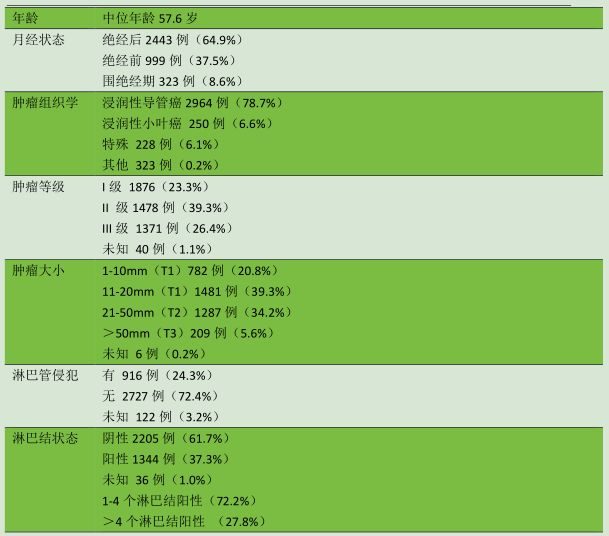
編者按:對於前哨淋巴結陽性乳腺癌患者,此前尚無評定新輔助化療後非前哨淋巴結轉移風險的預測模型。
2018年5月20日,全國乳腺中心聯盟(原美國乳腺疾病學會)官方期刊《乳腺雜誌》在線發表北京大學腫瘤醫院乳腺癌預防治療中心歐陽濤等學者的研究報告,為前哨淋巴結陽性乳腺癌新輔助化療後患者建立了預測非前哨淋巴結轉移風險的新模型,並對該新模型進行了驗證。
該單中心研究首先對北京大學腫瘤醫院乳腺癌預防治療中心連續513例乳腺癌前哨淋巴結轉移接受新輔助化療患者的非前哨淋巴結轉移狀態影響因素進行評估,通過邏輯回歸分析建立預測模型,並對後續138例患者進行前瞻驗證。
結果發現,發生非前哨淋巴結轉移而接受腋窩淋巴結清掃的患者共有115例(22.4%)。根據多因素分析表明,新輔助化療後非前哨淋巴結轉移的顯著獨立預測因素包括:
腫瘤大小分期
陽性前哨淋巴結數量
微轉移
淋巴結包膜外侵犯
新輔助化療後原發腫瘤臨床緩解情況
該模型的曲線下面積為0.795(95%置信區間:0.7340.861)。當應用於前瞻病例時,該模型準確地預測了非前哨淋巴結轉移的風險,曲線下面積為0.772(95%置信區間:0.6530.845)。
因此,該研究提供了一種新的預測模型,可以評定中國前哨淋巴結陽性乳腺癌患者新輔助化療後非前哨淋巴結轉移的風險。對於前瞻驗證病例,該預測模型的效果良好,但是應用於臨床實踐之前,需要對該中心以外的患者開展進一步研究。
Breast J. 2018 May 20. [Epub ahead of print]
A new model to predict risk of nonsentinel lymph node status in Chinese sentinel lymph node-positive patients after neoadjuvant chemotherapy.
Yang Yang, Yingjian He, Zhaoqing Fan, Yiqiang Liu, Tao Ouyang.
Key laboratory of Carcinogenesis and Translational Research (Ministry of Education/Beijing), Breast Cancer Prevention & Treatment Center, Peking University Cancer Hospital & Institute, Beijing, China.
There is no previous predictive model to assess risk of nonsentinel lymph node metastases (NSLN) in sentinel lymph node (SLN)-positive breast cancer patients after neoadjuvant chemotherapy (NAT). Our goal was to develop a new predictive model for SLN-positive patients after NAT, and validate this new model. A series of 513 patients with metastases in SLN who received NAT were used to evaluate factors affecting NSLN status. Logistic regression analysis was performed to develop a predictive model, which was validated by a subsequent prospective 138 patients. There were 115 (22.4%) patients with metastases in NSLN followed by axillary lymph node dissection (ALND). Multivariate analysis indicated that tumor (T) stage, number of positive SLN, micrometastases, extracapsular extension (ECE), and clinical response of primary tumor after NAT were significant independent predictors for the NSLN metastases. Area under the curve (AUC) of the model was 0.795 (95% CI, 0.734-0.861). When applied to the prospective series, the model accurately predicted the risk of NSLN disease, AUC was 0.772 (95% CI, 0.653-0.845). We present a new predictive model to assess the risk of NSLN status in Chinese SLN-positive breast cancer patients after NAT. The predictive model performed well in prospective validation but needs to be further studied in external center patients before application to clinical use.







